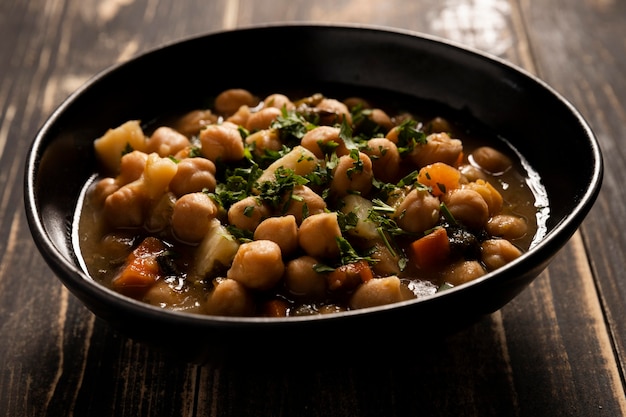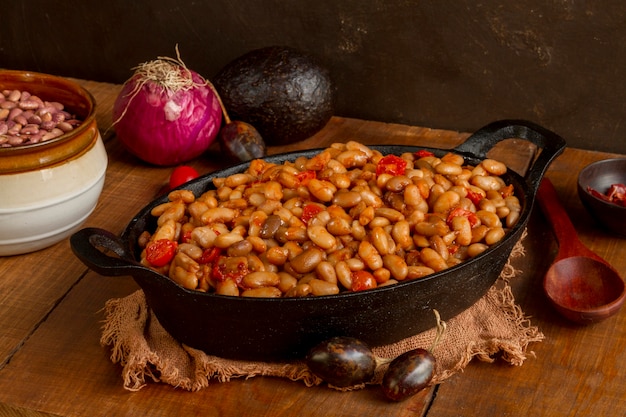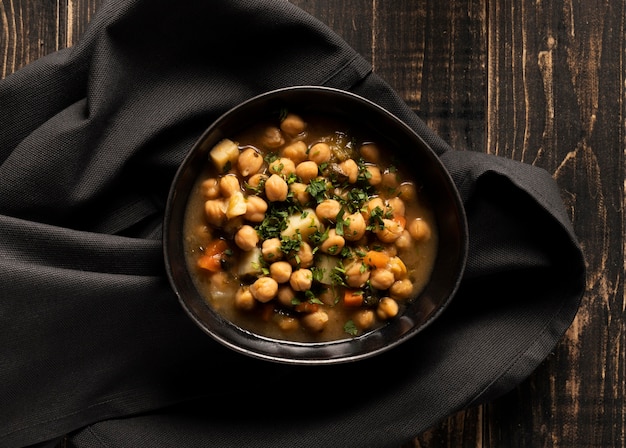Let's face it, there's nothing quite like sinking your teeth into a bowl of perfectly slow-cooked navy beans. They're creamy, flavourful, and oh-so-satisfying, especially when you've nailed that perfect tenderness. But achieving that ideal texture can be a bit of a culinary puzzle, especially if you're new to the slow cooker game. Fear not, my fellow bean enthusiast! I'm here to guide you through the process, sharing tips and tricks I've learned over the years to ensure your navy beans are the star of the show, every single time.
(Part 1) The Magic of Slow-Cooked Navy Beans

Slow-cooked navy beans, for me, are more than just a humble legume. They're a canvas for culinary creativity, a base for a multitude of delicious dishes, and a symbol of comfort food at its finest. The slow simmering, the gentle release of their inherent flavours, and the way they soak up the essence of whatever you add to them - it's all part of a magical transformation that makes them truly special.
Why slow cooking is a Culinary Masterclass
Think of slow cooking as a kind of culinary meditation. You're not rushing the process, you're allowing the beans to slowly soften and develop those deep, earthy notes that make them so irresistible. Plus, the slow cooker does all the hard work for you, freeing you up to focus on other things. You can pop everything in, set the timer, and forget about it until those wonderful aromas start wafting through the air.
The Patience Pays Off: A Culinary Mantra
Now, let's be honest, slow cooking is all about patience. You can't expect those beans to be ready in an hour. They need time to gently release their starch, creating that wonderfully creamy texture that makes them a joy to eat. But I promise you, that wait is worth it. You'll be rewarded with a pot of beans that are so tender they practically melt in your mouth.
(Part 2) Getting Those Beans Ready: A Step-by-Step Guide

Before you even think about firing up the slow cooker, you've gotta get your navy beans in tip-top shape. This is about more than just throwing them in a pot and hoping for the best. We want those beans to cook evenly and develop their full flavour potential, so we'll take a few key steps to prepare them for their slow-cooker adventure.
Sorting and Washing: The First Line of Defence
First things first, give those beans a thorough inspection. You want to remove any stones, debris, or errant bits of anything that don't belong. It's a little chore, I know, but it's worth it for a clean taste and a smooth texture. Once you've sorted them, give them a good rinse under cold water. This will wash away any dust, dirt, or grit that might be clinging to them, ensuring a truly delicious outcome.
Soaking: Unlocking the Potential
Soaking is a controversial topic in the bean world, with some people swearing by it and others dismissing it as unnecessary. My personal view? Soaking is a good idea, especially if you're working with older beans. It helps soften them up, making them cook faster and more evenly. Plus, it can help reduce the gas-producing compounds in beans, which is a win for anyone who's sensitive to those pesky side effects.
To soak your beans, simply cover them with fresh water in a large bowl. Let them soak overnight (at least 6-8 hours). Then, drain the soaking water and you're ready for the next step.
Pro tip: Add a pinch of baking soda to the soaking water for even softer beans. Just be sure not to go overboard, a little bit goes a long way.
(Part 3) The Slow Cooker Symphony: Orchestrating Flavour

Now, we're ready to get those beans slow cooking. Time to unleash your inner chef and create a symphony of flavours! The slow cooker is your trusty conductor, allowing you to create a harmonious blend of tastes that will tantalize your taste buds.
Choosing Your Slow Cooker: Size Matters
Before we begin, let's talk about your slow cooker. Make sure you've got the right size for the job. A smaller slow cooker will do the trick for a personal batch of beans, while a larger one is necessary for feeding a crowd or making a big batch for meal prep.
These days, you can find all sorts of fancy slow cookers with timers, temperature controls, and even built-in slow cookers, but a basic model will work just fine for this task.
A Recipe for Success: Assembling Your Slow-Cooked Bean Symphony
Now that your slow cooker is ready, it's time to get creative. Start with a good broth. I prefer chicken broth for a rich, savoury flavour, but vegetable broth is a delicious alternative.
Once you have your broth in the slow cooker, add your drained beans. Then, it's time to add those flavour-boosting ingredients that will elevate your bean dish to a whole new level. Here are some of my go-to additions:
- Chopped onions and garlic: These staples add a lovely depth of flavour to any bean dish.
- Smoked paprika: A touch of smoky goodness that adds a hint of warmth and complexity to your beans.
- A bay leaf: For an earthy, aromatic note that complements the richness of the beans.
- A splash of apple cider vinegar: A touch of sweetness and acidity that balances out the earthy flavours of the beans.
- A pinch of red pepper flakes: For a touch of heat if you like it spicy.
- Salt and pepper: To taste, of course!
Don't be afraid to get adventurous! You can add other vegetables like carrots, celery, or tomatoes. For a truly indulgent dish, consider adding smoked meat like bacon or ham for a rich, smoky flavour. The possibilities are truly endless.
(Part 4) Mastering the Timing: Unlocking the Perfect Tenderness
Okay, here's where things get really interesting – the cooking time. This is the crucial stage, the moment when all those carefully prepared ingredients come together to create a culinary masterpiece. But keep in mind, this is just a general guideline. The size of your beans, your slow cooker, and even your altitude can all influence the cooking time.
The Slow-Cooked Bean Timeline: A Guide to Timing
Generally speaking, you'll want to cook your navy beans on low heat for 6-8 hours, or on high heat for 3-4 hours. But, again, it depends on the specific beans and your slow cooker. I always recommend checking them after 4-5 hours on low heat. If they're not tender enough, simply keep simmering them for a bit longer.
The Fork Test: A Simple Way to Gauge Tenderness
The best way to tell if your beans are done is to give them a good poke with a fork. If they fall apart easily, they're ready to go! If they're still a bit firm, keep them simmering for another hour or so. Don't overcook them, though, or they'll turn into mush.
(Part 5) Beyond the Slow Cooker: Delicious Recipes to Savor
Your navy beans are slow cooked to perfection. Now it's time to get creative and turn them into mouthwatering meals. The possibilities are endless, so let your imagination run wild!
The Classic bean soup: A Comforting Staple
A hearty bean soup is a timeless classic for a reason. Simply add some chopped vegetables, broth, and spices to your cooked beans, and you've got a comforting and satisfying meal that's perfect for chilly evenings.
Chunky bean salad: A Refreshing Twist
For a lighter option, try a chunky bean salad. Combine your cooked beans with chopped vegetables, herbs, and a tangy dressing. It's a perfect side dish for picnics, barbecues, or any occasion where you want a fresh and flavourful bite.
Hearty Chili: A Flavorful Fiesta
If you're looking for a warm and comforting meal with a bit of a kick, try making chili. Add ground beef, tomatoes, chili powder, and your favorite spices to your cooked beans for a crowd-pleasing dish that's sure to become a family favourite.
Bean Dip: A Party Starter
Bean dip is a real crowd-pleaser, perfect for a casual gathering or a big party. Blend your cooked beans with some sour cream, cream cheese, and your favourite spices. Serve it with tortilla chips or crackers for a delicious and satisfying appetizer.
Vegan Chili: A Meatless Marvel
Slow-cooked navy beans are a fantastic base for a hearty vegan chili. Add chopped vegetables, tomato sauce, and your favorite spices for a delicious and satisfying meal that everyone can enjoy.
(Part 6) Troubleshooting: When Things Go Wrong
We've all been there, haven't we? You're following a recipe, everything seems to be going swimmingly, and then... disaster strikes. Don't worry, it happens to the best of us. Here are a few tips to help you troubleshoot those slow-cooked bean mishaps.
Beans Not Tender Enough: Extending the Simmer
If your beans are still firm after the recommended cooking time, don't panic. Just give them a bit more time in the slow cooker. Add a little more broth if needed and keep simmering until they reach your desired tenderness.
Beans Too Mushy: A Case of Overcooking
If your beans are too mushy, you've likely overcooked them. Unfortunately, there's not much you can do to fix this, but you can try blending them into a creamy dip or soup and adding some texture with chopped vegetables or crumbled cheese.
Beans Still Gassy: The Science of Digestion
If you're concerned about gas, try soaking your beans for longer or adding a pinch of baking soda to the soaking water. You can also try adding digestive enzymes to your meal, which can help break down the sugars that cause gas.
(Part 7) Storage and Leftovers: Making the Most of Your Bean Bounty
You've spent hours perfecting your slow-cooked beans, and now you're faced with a delicious dilemma: what to do with all those leftovers? Fear not, my friend, because leftover beans are a culinary treasure waiting to be unleashed!
Storing Your Bean Bounty: Refrigerator vs. Freezer
For short-term storage, keep your cooked beans in an airtight container in the refrigerator for up to 3-4 days. For longer storage, freeze them. Just let them cool completely, then transfer them to freezer-safe containers or bags. They'll last in the freezer for up to 3 months.
Repurposing Leftovers: A Feast of Possibilities
Leftover slow-cooked navy beans are a true culinary chameleon, capable of transforming into countless delicious dishes. Add them to soups, stews, salads, or dips. You can even use them to create bean burgers or veggie patties.
Thawing frozen beans: Back to Room Temperature
When you're ready to use your frozen beans, thaw them in the refrigerator overnight. You can also thaw them quickly in a microwave, but be sure to stir them occasionally to prevent uneven heating.
(Part 8) FAQs: Answering Your Bean-Cooking Queries
I know you're probably brimming with questions. So, here are some answers to the most frequently asked questions about slow-cooked navy beans.
FAQs
| Q: | A: |
|---|---|
| Can I use dried beans instead of canned beans? | Absolutely! Dried beans are a fantastic option, offering a more robust flavour. Just make sure to soak them first and adjust the cooking time accordingly. Dried beans will generally take longer to cook than canned beans. |
| What if I don't have a slow cooker? | No problem! You can still cook navy beans on the stovetop. Bring them to a boil in a large pot of water, then reduce the heat and simmer until they're tender. |
| Can I add spices to my slow-cooked beans? | Absolutely! Experiment with different spices to add flavour to your beans. Some popular choices include cumin, chili powder, paprika, garlic powder, and onion powder. |
| What if my beans are still hard after 8 hours of slow cooking? | Don't worry, it happens! Continue slow-cooking them for another hour or two, or cook them on the stovetop until they're tender. |
| What should I do with leftover navy beans? | Leftover navy beans are a fantastic way to add protein and fiber to your meals. Add them to soups, stews, salads, or dips. You can even make bean burgers or veggie patties. Get creative and enjoy! |
I hope this guide has shed some light on the art of slow-cooked navy beans. Remember, the key is to be patient, experiment with different flavours, and have fun in the kitchen. So, go on, give it a go, and let your taste buds be your guide. Happy bean cooking!
Everyone is watching

How to Cook Frozen Lobster Tails Perfectly: A Step-by-Step Guide
RecipesLobster. Just the word conjures up images of lavish meals, special occasions, and a taste of luxury. But let's...

Pork Fillet Cooking Time: How Long to Cook It Perfectly
RecipesPork fillet, or tenderloin as it's sometimes called, is a real favourite in our house. It's so versatile, and...

Pigs in a Blanket Cooking Time: How Long to Bake for Perfect Results
RecipesAh, pigs in a blanket. Just the name conjures up images of those delightful little parcels of crispy pastry en...

The Ultimate Guide to Cooking Delicious Frankfurters
RecipesLet's face it, we all love a good frankfurter. It's a classic, simple, and always satisfying. But let's be rea...

Wolf Meat Recipes: A Guide to Cooking Wild Game
RecipesLet's be honest, you don't see wolf meat at your local butcher shop every day. It's a bit of a wild card, but ...
